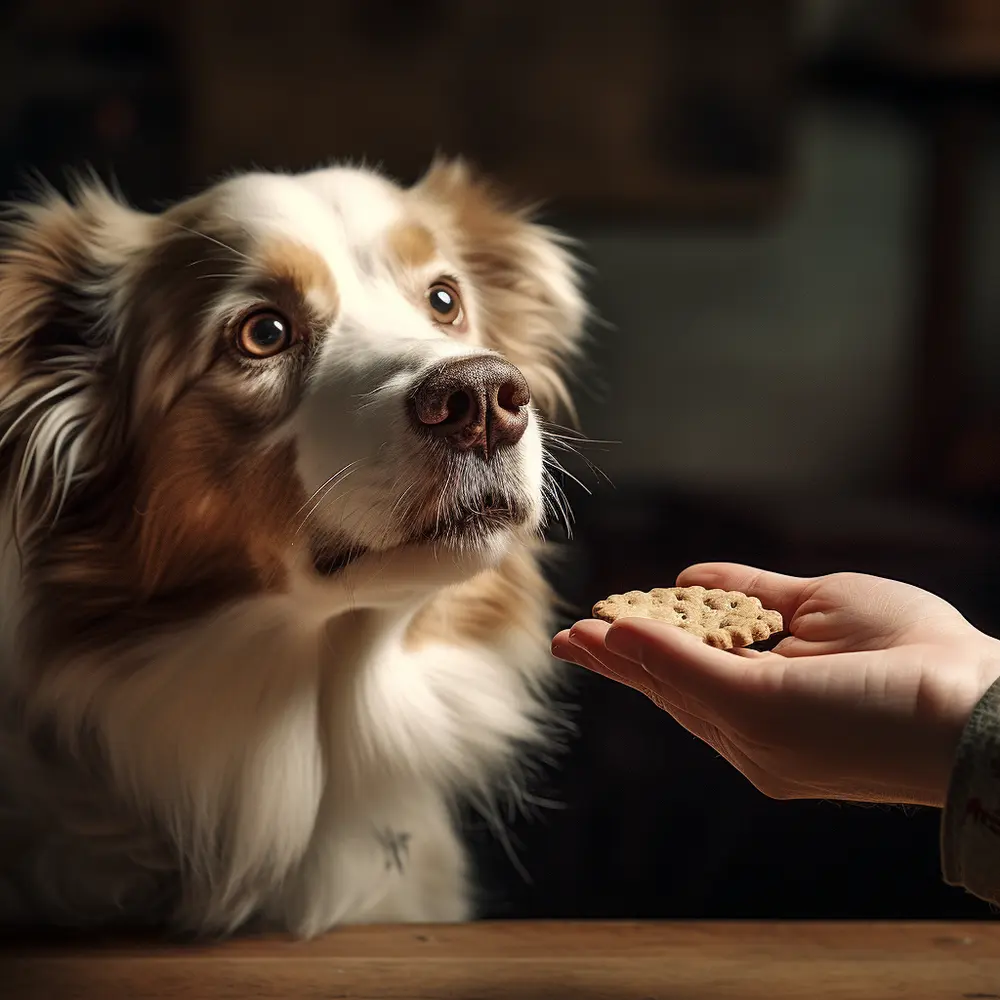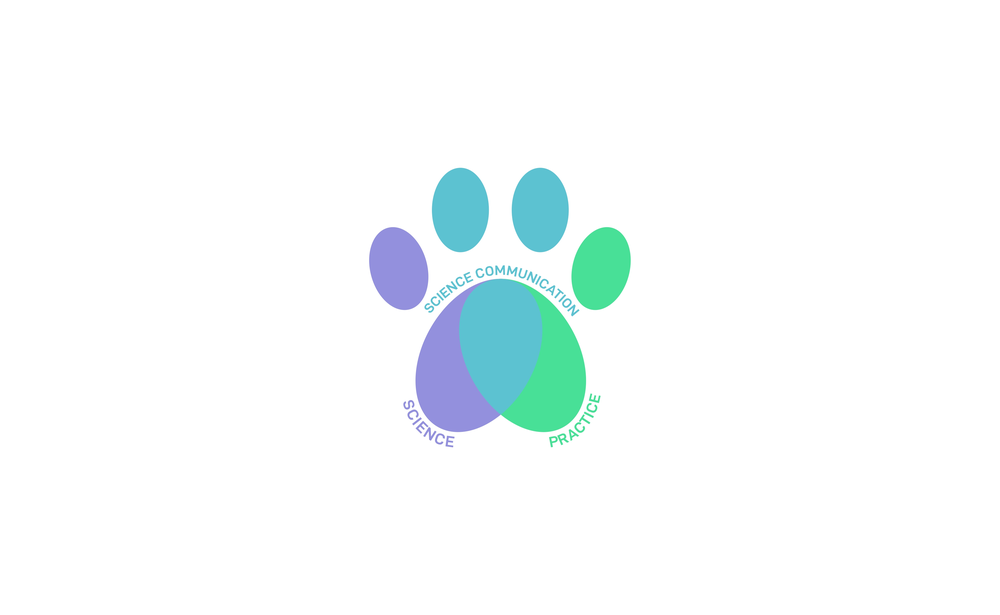Table of Contents:
Understanding Incremental Dog Training
Incremental dog training is a method where complex behaviours are broken down into smaller, manageable tasks. By focusing on teaching one aspect at a time, this approach makes learning more accessible and less daunting for the dog. It is similar to how humans approach new skills – step by step.
At the core of incremental training lies the idea that every large task can be divided into a series of smaller steps. Each step builds upon the previous one, creating a solid foundation of understanding and skill before moving onto something more challenging. This technique is not just about training your dog in the basics; it's about setting them up for long-term success.
When a dog masters a step, they gain confidence and are eager to learn more. This is where rewarding early wins becomes essential. Providing positive reinforcement upon the successful completion of each step encourages the dog and strengthens their willingness to participate. This reinforcement can be in the form of treats, praise, or playtime – whatever motivates your dog the most.
It is crucial to ensure that each step in the training process is clear and achievable. If a dog struggles to complete a task, it may be too complex and needs to be broken down further. Remember, the goal is to create a positive learning environment where the dog feels successful at each stage of the process.
By embracing incremental training, you're not just teaching your dog commands - you're also teaching them how to learn, which is a valuable skill that will benefit both the dog and owner throughout their life together.
The Benefits of Rewarding Early Wins in Canine Behaviour
Recognising and celebrating small achievements early in dog training can have a profound impact on a dog's behaviour. This strategy plays a pivotal role in nurturing a dog's enthusiasm and willingness to engage in the training process. Each small win acts as a stepping stone towards more complex tasks and commands.
Rewarding early wins has multiple benefits for canine behaviour. First, it accelerates the learning process by providing immediate feedback which dogs can easily relate to the desired action. As a result, dogs are able to make quicker associations between their behaviour and the positive outcome.
Additionally, this approach helps to build the dog's confidence. Dogs that receive regular positive reinforcement for their efforts develop a stronger belief in their own abilities. This boost in self-esteem makes them more eager to try new things and more resilient to setbacks.
Another key benefit is the prevention of frustration and boredom. By rewarding early and often, dogs remain motivated and interested in training. It also minimises the chances of a dog developing negative behaviours out of confusion or lack of proper guidance.
Finally, rewarding early wins promotes a stronger bond between the dog and the trainer. The process of positive reinforcement is as much about training as it is about communication. Each reward is a message of approval and love, reinforcing the dog's trust and connection with their owner or trainer.
The Benefits and Considerations of Incremental Dog Training
| Advantages of Incremental Training | Considerations in Incremental Training |
|---|---|
| Builds a strong foundation step by step | Can be time-consuming in the early stages |
| Encourages consistent positive reinforcement | Requires patience and commitment from the trainer |
| Reduces frustration for the dog and trainer | May not show immediate considerable improvements |
| Helps in mastering complex tasks by breaking them down | Can be repetitive and may appear monotonous |
| Reinforces dog's confidence with early and frequent wins | Needs careful planning to set achievable substeps and milestones |
Setting Achievable Goals in Dog Training
Setting achievable goals is a foundational element in effective dog training. Goals provide both the dog and the trainer with a clear roadmap of expectations and achievements. When goals are well-defined and within reach, they can greatly enhance the effectiveness of dog training sessions.
It starts with understanding your individual dog's current abilities and limitations. A goal that is realistic for one dog might be unreasonable for another. Taking into account the dog's age, breed, temperament, and previous training history is essential. Moreover, each dog's individual personality and learning speed should tailor the goals set for them.
A good starting point is establishing short-term goals that lead towards a larger, long-term objective. Each goal should challenge the dog just enough to keep them engaged without causing stress or frustration. For instance, a short-term goal could be learning to sit on cue, while a long-term goal might encompass mastering a full routine.
Adaptable goals are also key. If a dog is struggling with a particular task, it's crucial to reassess and adjust the goal, ensuring it remains attainable. Likewise, if a dog is progressing rapidly, goals should be scaled to continue challenging and developing their skills.
In conclusion, setting sensible and flexible goals in dog training not only sets the stage for success but also ensures a positive and fulfilling journey for both trainer and dog.
The Role of Consistency in Training Your Dog
Consistency is a cornerstone in laying the foundations for successful dog training. A consistent approach ensures that your dog receives the same message every time, which is crucial for effective learning and behaviour modification. Consistency encompasses several aspects, from verbal signals to rewards and possibly even the tone of voice used.
To instil good habits in your dog, it's important to maintain a uniform set of verbal and/or visual signals. Switching words or gestures quickly can lead to confusion, minimizing the chances of success. Establish a specific signal for each action you want your dog to learn and stick with it.
Equally, how and when you reward your dog should follow a predictable pattern. Rewards given sporadically or without a clear link to the correct behaviour can impede progress. In most cases you should ensure that positive reinforcement is immediate and corresponds directly with the desired action performed by the dog.
Routine also plays a significant role in consistency. Dogs learn best when training occurs at regular intervals, creating a structured learning environment. Regular practice reinforces the behaviours being taught, cementing what has been learned.
A consistent approach provides the structure necessary for dogs to understand and meet the expectations set for them, fostering a harmonious relationship between the dog and their human companion.
Recognising and Celebrating Small Victories
One of the most positive ways to reinforce dog training efforts is by recognising and celebrating the small victories your dog achieves along the way. Acknowledging these moments not only serves as encouragement for your dog but also helps trainers and owners stay engaged and motivated throughout the teaching process.
Celebrating these wins can be as simple as offering a verbal praise, giving a special (highly-desired) treat, or spending a bit of extra time playing their favourite game. These acts of recognition help to solidify the behaviours you are teaching, showing your dog the direct benefits of their good behaviour.
Moreover, taking note of these achievements can be a valuable source of feedback for the trainer. It provides insight into the dog's learning style and what rewards are most effective, enabling a more tailored and successful training programme.
It's also important to share these successes with others, like family members who interact with the dog, to ensure that everyone is contributing to a coherent and rewarding environment for the dog's development. Creating a positive atmosphere around the dog's training journey is conducive to their continued growth and willingness to learn.
How to Avoid Overwhelming Your Dog During Training
Ensuring your dog does not become overwhelmed during training sessions is crucial for their mental well-being and the overall success of the training programme. A dog that is stressed or anxious is less likely to learn effectively and may develop negative associations with training.
To prevent your dog from feeling overwhelmed, limit training sessions to short, manageable durations. Dogs have varying attention spans, and especially for puppies or highly energetic breeds, shorter sessions prevent cognitive fatigue.
It's also important to keep the difficulty level appropriate to your dog's current training stage. Pushing too hard or introducing complexities too rapidly can induce stress. Pay close attention to your dog's body language and cues of discomfort or confusion, and adjust the training accordingly.
Variety in training can also keep sessions interesting and reduce frustration for your dog. Alternating between different tasks can keep their minds active without overworking them on a single, potentially challenging activity.
Last but not least, be mindful of your own emotions and remain patient and calm. Dogs are incredibly sensitive to our emotional states, and exhibiting frustration or impatience can in turn overwhelm your dog. Keeping a positive and encouraging attitude will go a long way in ensuring your dog's comfort and readiness to learn.
Step-by-Step Guide to Incremental Dog Training
Engaging in incremental dog training is about being systematic and patient. By breaking down tasks into smaller steps, you can create a thoughtful process that cultivates your dog's skills effectively.
Here's a step-by-step guide to get you started:
- Identify the Final Behaviour: Start by defining the end goal — the complete behaviour you want your dog to learn.
- Break It Down: Separate the final behaviour into smaller, achievable steps. Each mini-goal should lead naturally to the next.
- First Steps First: Begin with the simplest action your dog needs to learn and slowly build complexity.
- Introduce Cues/Signals: As your dog masters each step, introduce verbal signals or hand signals to associate with the actions.
- Practice Consistency: Ensure you and anyone else involved in the dog's training use the same cues, signals and reward system.
- Positive Reinforcement: Reward your dog immediately after they successfully complete a task, reinforcing their correct behaviour.
- Repeat and Review: Practice each step several times before moving on to the next to ensure your dog has fully grasped the concept.
- Progress Gradually: Only introduce the next step once your dog is consistently performing the current one with confidence.
- Combine Steps: As your dog progresses, start to link the steps together to form the final behaviour.
- Generalisation: Practice in various locations with different distractions so your dog learns to perform the behaviour universally.
- Phasing Out Rewards: Slowly reduce the frequency of treats over time but continue with praise to maintain the learned behaviour.
This incremental approach to training allows your dog to build upon each success, leading to a stronger understanding of the desired behaviour and a more fulfilling learning experience for both of you.
Incorporating Positive Reinforcement in Your Training Routine
Incorporating positive reinforcement into your dog training routine is a method proven to enhance a dog’s learning experience. It is based on the principle of rewarding your dog for their desired behaviour, which increases the likelihood of that behaviour being repeated in the future.
- Choose the Right Reward: Identify what your dog finds most rewarding. This could be treats, toys, or verbal praise and affection, but this list is not exhaustive. Vary these rewards to maintain your dog's interest.
- Timing is Key: Deliver the reward immediately after your dog performs the desired action. This helps your dog make a clear connection between their behaviour and the positive outcome. The use of marker signals can be very efficient in this context.
- Be Generous: Especially during the early stages of learning a new skill, be liberal with rewards to build a strong association.
- Gradually Reduce Treats: As your dog becomes more consistent, start to intermittently reward with treats, while always maintaining praise.
- Stay Positive: Keep your energy and mood upbeat. Your attitude can greatly influence your dog's willingness and enjoyment of training.
By weaving positive reinforcement effectively into your training routine, you create a supportive environment where your dog can thrive and learn with confidence.
Knowing When to Progress with Your Dog's Training
Determining the right time to advance in your dog's training is a crucial aspect of the incremental training methodology. It requires attentiveness to your dog's readiness and signs that they have assimilated the current lesson.
- Consistency is Crucial: Look for consistent performance in the current task. Your dog should be able to execute the desired behaviour reliably and without hesitation.
- Clarity of Cues: Ensure that your dog not only reacts to cues but does so promptly. This clarity indicates that your dog understands what is expected when a signal is given.
- No Signs of Stress: Monitor your dog for any indicators of stress or confusion. Progressing should happen only when your dog seems at ease with the current tasks.
- Proofing the Behaviour: Test your dog's understanding by practising in different settings and adding controlled distractions. Stable performance despite these variations shows a readiness to move forward.
Remember, every dog learns at their own pace. Be patient and allow your dog the time they need to fully grasp each step before introducing more complexity into their training regime.
Troubleshooting Common Issues in Incremental Training
Even with a well-planned training routine, you may encounter challenges that can disrupt the incremental training process. Addressing these issues promptly can help keep your training on track.
- Reassess the Steps: If your dog struggles with a specific step, it might be too complex. Break it down into even smaller parts to simplify the learning process.
- Check for Consistency: Ensure all trainers and family members interact with the dog using the same signals and rewards. Inconsistency can confuse your dog and impede progress.
- Modify the Environment: If distractions are causing issues, try to reduce them, or move to a quieter location to help your dog focus better.
- Examine Reward Effectiveness: If your dog is no longer motivated by the current rewards, switch them up. Sometimes changing treats or using a different form of praise can reignite your dog's enthusiasm.
- Review the Pace: Not all dogs progress at the same rate. If your dog seems overwhelmed, slow down the pace of training to allow more time for practice and reinforcement.
By effectively addressing these common training issues, you can better ensure a smooth and successful learning experience for your dog.
Some Theory Behind Successful Dog Training Techniques
Understanding the theory behind successful dog training techniques can empower owners and trainers to make informed decisions and apply methods that align with a dog's natural learning processes. This knowledge emerges from fields such as ethology, psychology, and neuroscience.
- Operant Conditioning: This principle involves learning through consequences. Behaviours that are followed by positive consequences (reinforcers such as rewards) tend to be repeated, while those followed by negative consequences (such as aversives) are typically avoided.
- Classical Conditioning including marker signals: A cornerstone of dog training, classical conditioning involves creating associations between two stimuli. A classic example is the use of a marker signal (like a clicker or a specific word) that, when consistently paired with a reward, signals to the dog that a desired behaviour has been achieved. This technique helps dogs make clear connections between their actions and the rewards that follow, thereby enhancing the learning process. It can be essential for establishing a foundational communication system between trainer and dog, and it plays a crucial role in shaping desired behaviours.
- Cognitive Learning: Dogs have the ability to solve problems and learn from their environment. By using training methods that stimulate a dog’s cognitive skills, trainers can improve problem-solving abilities and adaptability.
- Emotional Responses: Recognising a dog's emotional state is crucial. Training should occur when a dog is in a calm and receptive mood, as stress and anxiety can hinder learning.
- Neuroplasticity: This is the brain's ability to change and adapt as a result of experience. Positive training experiences can strengthen neural connections related to good behaviour.
- Hormonal Influence: The release of certain hormones during training, such as dopamine during positive reinforcement, can increase a dog's pleasure and motivation to learn.
By incorporating these scientific insights into training strategies, trainers can enhance effectiveness and create a positive and enriching learning environment for dogs.
Maintaining Patience and Persistence in Dog Training
The virtues of patience and persistence are invaluable in the realm of dog training. They form the bedrock of a constructive and rewarding training experience for both the trainer and the dog.
Maintain Realistic Expectations: It is important to acknowledge that progress in dog training does not always follow a linear path. There will be highs and lows, and adjusting your expectations can help manage any frustrations.
Stay Calm and Positive: Dogs are highly perceptive of human emotions, and your patience sets the tone for the session. A calm demeanour encourages your dog to remain focused and at ease during training.
Persist Through Challenges: Challenges are an inevitable part of the training process. Being persistent and maintaining your training efforts through difficult periods is essential for overcoming these hurdles.
Learn to Adapt: If certain approaches aren't yielding the desired results, be willing to adapt your techniques. Patience involves continuously learning and evolving your methods to suit your dog’s needs.
By anchoring your training in patience and perseverance, you create a supportive atmosphere that is conducive to learning and allows your dog to achieve their full potential.
Measuring Your Dog's Training Progress
Tracking the progress of your dog's training is essential to ensure that both you and your canine companion are on the right path toward achieving your training goals. Effective measurement can help you adjust your approach and celebrate your dog’s successes, no matter how small they might seem.
- Keep a Training Log: Documenting each training session, including the exercises performed, the level of success, and any notable behaviours or reactions, can be a powerful tool in evaluating progress over time.
- Video Recordings: Filming training sessions provides an objective view of your dog’s behaviour and response to signals. Reviewing these videos can highlight areas of improvement or confirm mastery of skills. In addition, it can help the dog owner observe their own behaviour to detect possible areas of improvement.
- Behavioural Milestones: Set specific milestones aligned with your dog’s training plan. When these milestones are reached, they serve as clear indicators of improvement and acquired skills.
- Consistent Signal Test: Testing how your dog responds to learned commands in different settings or with distractions can help gauge the reliability of their reaction to the trained signals.
- Feedback from Others: Sometimes, getting an outside perspective can be invaluable. Input from others who interact with your dog can provide new insights into their behaviour and obedience outside of structured training.
By attentively monitoring and measuring your dog's training progress, you can provide the encouragement necessary to keep moving forward and ensure that your training methods are effective and rewarding.
Adapting Training Techniques to Your Dog's Unique Needs
Each dog is an individual with unique traits and learning styles. Adapting training techniques to meet your dog's specific needs is crucial for a successful and fulfilling training journey.
- Consider Your Dog's Breed or Mix: Different breeds or mixes have varying characteristics and innate behaviours. Tailoring your training to leverage these traits can yield quicker and more effective results.
- Account for Your Dog's Personality: Some dogs are bold and assertive, while others may be shy and reserved. Modify your approach to match your dog’s temperament, ensuring they feel secure and confident during training.
- Monitor Your Dog's Health: Physical limitations or health issues can greatly affect your dog's ability to perform certain tasks. Adjust your expectations and techniques to accommodate any physical constraints.
- Choose the Right Motivators: Identify what most effectively encourages your dog. While some may be food-driven, others may prefer toys or verbal praise. Use the right motivators to capture and maintain your dog's interest.
- Be Flexible and Patient: Be prepared to change your training plan as you learn more about what works best for your dog. Patience is key as you navigate this process together.
By being attentive to your dog's needs and willing to adjust your training methods, you create a bespoke training experience that can greatly enhance both learning and the bond between you and your dog.
Conclusion: Embracing the Journey of Dog Training
Dog training is a rewarding journey that enhances the bond between you and your dog. Embracing the process with patience, understanding, and flexibility ensures that this journey is not only successful but also enjoyable for both you and your canine companion.
As you proceed, remember that each small step is a building block towards a well-trained, confident, and happy dog. Celebrate the milestones, learn from the challenges, and cherish the unique relationship that develops through the shared experiences of training.
The incremental approach, with its emphasis on achievable goals and positive reinforcement, is a powerful method that respects the natural learning pace of your dog. By acknowledging the science behind learning, staying consistent, and adapting to your dog's unique needs, you set the stage for a lifelong mutual understanding.
In conclusion, dog training is not just about teaching behaviours upon signal, it's about communication and mutual respect. It's a path that leads to a well-adjusted dog and a deeply satisfying companionship. Take pride in the progress and look forward to the companionship and joy that come with each new day of training.
FAQ on Effective Dog Training Strategies
Why is incremental training important for dogs?
Incremental training is important because it breaks down complex behaviors into smaller, manageable tasks, making it easier for the dog to learn and succeed. This method builds confidence and encourages a positive learning environment by ensuring the dog masters one step at a time before progressing.
What are the benefits of rewarding early wins in dog training?
Rewarding early wins accelerates the learning process, reinforces desirable behaviors, and builds the dog's confidence. It also enhances the bond between the trainer and the dog by providing positive feedback, which encourages further engagement with the training process.
How can I ensure consistency in my dog's training routine?
Consistency in dog training is achieved by using the same commands, rewards, and training methods throughout the process. It's also important to train at regular intervals and maintain a consistent tone of voice and body language to avoid confusing the dog.
When should I progress to the next step in my dog's training?
You should progress to the next step in your dog's training when they consistently perform the current task with confidence and without hesitation. Be sure to test the behaviour in various scenarios to ensure the dog has generalised the skill before moving on.
What should I do if my dog is not progressing in training as expected?
If your dog is not progressing as expected, it may be necessary to reassess and simplify the steps, ensuring they are achievable. Check for consistency in commands and rewards, reduce distractions, vary the rewards to maintain interest, and adjust the pace of training according to your dog's learning speed.








